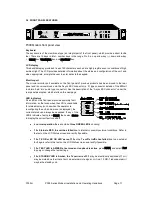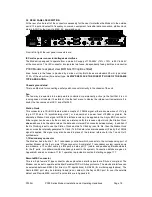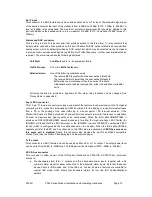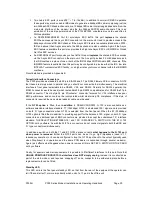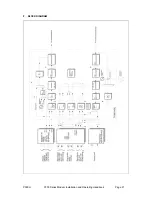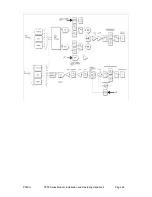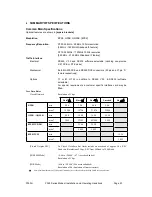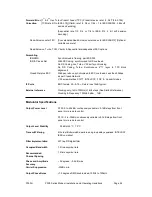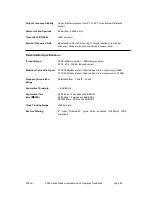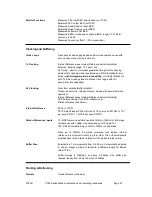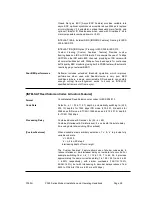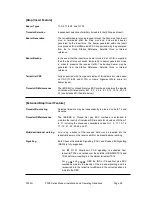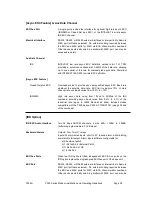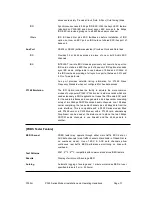
P300H
P300 Series Modem Installation and Operating Handbook
Page 16
3
DESCRIPTION
3.1 OPERATION
The P300 Series modems are fully software controlled and with the exception of the optional G.703
interface option there are no links or switches used to configure the unit. This enables all control and
configuration to be performed either locally from the front panel, or by remote M&C. Local control is by
front panel keyboard, and a large, easy to read, 80 character LCD display, with clear, intuitive menus for
configuration and control. All the set-up parameters are stored in non-volatile memory which will retain
data for a minimum of 3 years, with no power applied. The transmit and receive functions of the Modem
are independent, so that they may be operated at a different data rates, IF frequencies, or different
services if required.
Like all Paradise Datacom products, the P300 Series includes a traffic log, which stores the last 500
events, suitably time-stamped. It can automatically add several measured parameters to the log at
operator set intervals, including average & worst case Eb/No, average & worst case estimated user
BER, average & worst case estimated uncorrected BER, and the buffer fill state. The logged
performance monitoring allows investigation into customer reports of poor link performance, and can
provide a useful correlation against weather conditions, etc.
3.2 FAULT PHILOSOPHY
Faults are split into two categories:
a)
UNIT FAULTS
:
Equipment failures (such as a synthesiser lock failure).
b)
TRAFFIC FAULTS
: Data path failures, (such as a lack of input clock).
A full description of every detected fault, its category (unit or traffic), and the corresponding action taken
is provided in Appendix G - Fault Messages and Action Table. The response of the front panel LED
indicators and external fault relays respond is described in the following sections.
3.3 ELECTRICAL DESCRIPTION
The P300 modem comprises of a single main modem Printed Circuit Board (PCB) with four optional
additional boards:
Optional G.703 interface (two different boards for T1 or E1 operation).
Optional IDR ESC board, which provides for all the IDR ESC requirements
Optional Monitor / AGC board which provides a user scalable AGC output and a constellation
monitor point.
Optional Turbo FEC daughtercard
For the P310, an L-Band daughterboard is also fitted internally above the main modem board, and
further three internal options are possible:
Reference oscillator options (several of varying stabilities)
An internal 100W PSU to provide a DC feed to an external BUC
An optional FSK communications board, to enable a modem and BUC to bo operated from the
modem front panel (and to provide closed loop power control to the BUC flange).
Содержание P300 Series
Страница 21: ...P300H P300 Series Modem Installation and Operating Handbook Page 21 F BLOCK DIAGRAM ...
Страница 22: ...P300H P300 Series Modem Installation and Operating Handbook Page 22 ...
Страница 163: ...P300H P300 Series Modem Installation and Operating Handbook Page 163 8 12 4 Eb No Explanatory Diagram ...
















